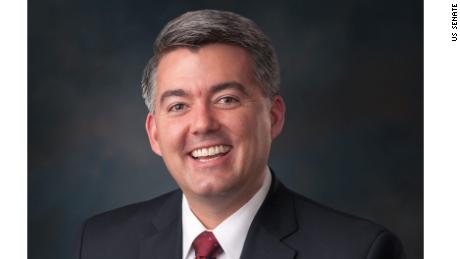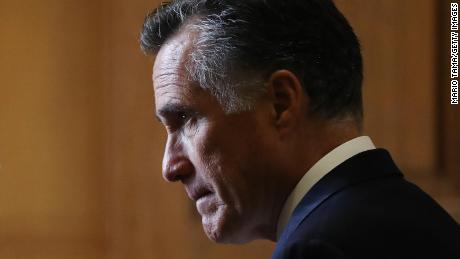The RNC has made it clear that this is now President Donald Trump’s party. The question is whether it can survive in that form or not.
Compared with the 2016 GOP convention, which rippled with unresolved tension and resistance to Trump’s rise, the conspicuous absence of dissent at this year’s event underscores how the President has stamped the party with his trademark as surely as if it were one of his downtown skyscrapers. The party’s choice to skip passing a platform and instead approve a brief statement declaring it will “enthusiastically support the President’s America-first agenda” testifies to his triumph.
As Robert P. Jones, CEO and founder of the nonpartisan Public Religion Research Institute, recently calculated, the GOP coalition today closely resembles the racial and religious profile of people who are 65 or older in the overall US population, while Democrats more closely resemble the profile of those who are younger than 30.
“It’s just not a sustainable trajectory,” he says.
In 2016, Trump won very few of the states with the most immigrants, the most college graduates or the fewest White Christians, and polls show he could lose several of the small number he did carry in each category. House Republicans, while still strong in rural areas, are also at high risk for even further losses in the big metropolitan areas that keyed the Democratic surge in 2018. That same demographic and geographic realignment threatens embattled GOP senators in Arizona, Colorado, North Carolina, Maine and potentially Iowa, Georgia and conceivably even Texas.
Further exiled from US’ diversity?
“It’s California redo,” he told me. Even if Trump loses, the national party “is not going to change. It’s going to get more insular, more monolithic, more intense, and it’s going to repel more voters who are not in the tribe.”
From many angles, the 2020 campaign shows that process well underway. Even compared with 2016, all signs suggest that Trump and the GOP this year will become even more reliant on support from his narrow coalition of core groups: Whites who live in rural areas, lack college degrees or identify as evangelical Christians. Polls conducted just before the national conventions showed that while Trump generally is not quite matching his extraordinary 2016 levels of support from those groups, he remains very strong with them.
With the electorate dividing along these lines, Trump and the GOP face the strong likelihood that they will be further exiled from the places that reflect the nation’s growing racial and cultural diversity, leaving them even more dependent on the stagnant or slowly growing places that have been least touched by America’s demographic and cultural changes.


President Donald Trump speaks during the first day of the Republican National Convention, Monday, Aug. 24, in Charlotte, NC.
From a religious perspective, Trump in 2016 won 21 of the 25 states where White Christians constitute a majority of the population, according to data from the Public Religion Research Institute. But he captured just nine of the 25 states in which they represented less than half of the residents. Now he’s in serious danger of losing three of those nine (Arizona, Florida and North Carolina) and he’s not out of the woods in two others (Georgia and Texas).
Congressional Republicans appear on track for losses along each of these fronts too. Democrats, for instance, already hold 32 of the 40 Senate seats in the 20 states where immigrants represent the biggest population share. In November, Democrats are strongly favored to win two more (in Arizona and Colorado) and have a competitive, if more difficult, shot at three others (Texas and both seats in Georgia).


Sen. Cory Gardner, R-Colorado
Republicans similarly now hold just 15 of the 50 Senate seats from the 25 best educated states and face elevated risks of losses in Colorado, North Carolina and Maine, as well as less severe but still plausible challenges in Georgia and Montana. (If Republican Cory Gardner loses in Colorado, Republicans will hold none of the 24 Senate seats in the 12 states with the largest share of college graduates.) Colorado, Arizona, Georgia and Texas, all competitive Senate seats, each rank near the bottom of states with the most White Christians, as well.
That prospect gives Madrid uncomfortable déjà vu. “The California Republican Party is the party of the deserts, the mountains, the valleys: That’s the only place it exists,” he says. “They are all in the most remote, rural parts of the state. And that’s what is happening nationally with the House.”
A base resistant to change
These patterns underscore the electoral bet Trump has imposed on his party: The groups he runs best with are almost all shrinking as a share of American society, while the groups that he’s alienated are growing. Census data analyzed by Pew found that Whites without college degrees fell from 52% of all voters in 2004, the last time a Republican presidential nominee won the popular vote, to 42% in 2016; if that long-term trajectory continues, they’ll likely constitute 40% in 2020. White Christians represented 54% of the population as recently as 2008; now they are around 44%, the Public Religion Research Institute has found. White evangelicals tumbled from 21% of the population to 15% over that same period. Many rural and small-town areas remain stagnant or are shrinking in population.
Conversely, in the census data analyzed by Pew, people of color have increased their share of the vote since 2004 from about one-fifth to more than one-fourth, while Whites with college degrees have edged up from around one-fourth to more than 3 in 10.
The nation’s 250 largest counties — about two-thirds of which preferred Clinton over Trump — account for a slightly growing share of population and a more rapidly increasing majority of the nation’s jobs and total economic output, according to analysis by the Brookings Institution’s Metropolitan Policy Program.
All these trends predated Trump, but his stark appeals to the elements of White America most uneasy about racial, cultural and even economic change have intensified and accelerated them. That’s left his party more isolated from the most economically dynamic and culturally diverse communities across the country. It has also produced a Republican coalition whose opinions on racial and cultural change starkly diverge from opinion in the country overall — in many cases by even greater margins than only a few years ago.
From 2015 until 2020, the institute found, the share of both White Democrats and independents who said that police shootings of African American men are isolated incidents, rather than part of a pattern, dropped by more than 20 percentage points. That’s produced a clear majority of Americans who say such shootings are part of a pattern. But 81% of White Republicans still describe these shootings as isolated incidents, down only minimally from 85% in 2015. Nearly two-thirds of White Republicans likewise still say discrimination against Whites is as big a problem as bias against African Americans, down only minimally from 2015. A growing share of all Americans, now slightly above 60%, reject that view.
On attitudes about racial bias, “Republicans have stuck it out and there is [virtually] no change, and one of their biggest base groups, White evangelical Protestants, are right there,” says Jones. “Democrats have moved, independents have moved, other religious groups have moved, so it is a Republican Party and a shrinking, aging White Christian base that is increasingly out of touch with where the country is.”
Robert Jones of the Public Religion Research Institute has found a compelling way to crystallize all of these differences by combining the racial and religious composition of each party’s coalition. He notes that self-identified Democrats now divide about in thirds among White Christians, non-White Christians and people who identify with non-Christian faiths or no religion at all. That closely resembles the profile of all Americans aged 18-29.
By contrast, White Christians still make up about two-thirds of self-identified Republicans, with the rest dividing almost equally between non-White Christians or those who identify with non-Christian faiths or no religion at all. That closely overlaps the racial and religious profile of Americans 65 or older, Jones notes.
Current Republican elected officials have not raised an audible peep of protest as Trump has deepened these dynamics. But some in the party warn that these trends are unsustainable.
“The trends of 2016-17 and ’18 are continuing apace, with continuing weakness of the Republican brand in suburban areas that had traditionally voted Republican coupled with strengthening of the Republican brand in rural areas that had traditionally voted Democrat,” GOP pollster Whit Ayres told me recently. “The problem, of course, is that the Republicans are trading larger, faster-growing areas for smaller slower-growing areas, and the math does not work out in the long run with that sort of trade.”
Can the party reboot?
Former Republican Rep. Charlie Dent of Pennsylvania, a CNN political commentator, sees the same trends on the ground in that critical battleground state. Trump “has certainly done well among White voters, particularly in rural areas without a college degree,” Dent told me. “There’s no question he has spoken to that constituency in ways that they have responded. At the same time, we are witnessing collapsing support for Republicans in these suburban counties, and not just in (the) Philadelphia area, but Lehigh Valley, suburban Harrisburg, Pittsburgh.”
Like Ayres, Dent doesn’t rule out Trump mobilizing enough of his constituencies to squeeze out an Electoral College win primarily through the Rust Belt, even if he loses the popular vote again. But he argues these trends are not sustainable for the party into the 2020s.
“I just don’t know that the math works,” he says. “I don’t know there are enough rural White voters to offset the losses in the suburbs. The suburbs in Pennsylvania are by and large increasing in population, and that’s where we are losing support, and the areas that Trump is gaining support tend to be areas of population stagnation or decline.”
“We are just reminding them every day: Do you really want to associate with this?” Madrid says.
The Republican dissidents who believe Trump is leading the party toward a demographic crack-up face a conundrum: If he loses because he alienates more well-educated, young and minority voters, the Republican voters left behind will tilt even further toward the non-college and non-urban Whites and evangelical Christians drawn to his racial nationalism.
For that reason, longtime conservative strategist Bill Kristol, a leading Trump critic, believes that whatever happens in November, it won’t be easy for the GOP to abandon the course Trump has set. “I’m very skeptical that the party can just snap back and pretend Trump never existed,” he says.
But Kristol also says that if Trump loses some of the growing Sun Belt states that have long been pillars for the party — including Georgia, Florida and above all Texas — that might unnerve Republicans enough to force a new debate over their direction.


Sen. Mitt Romney (R-Utah) in the US Capitol on January 24, 2020.
Dent is also hopeful that if Trump fails, the GOP might reconsider the advice from the celebrated “autopsy” produced by the Republican National Committee after Mitt Romney’s defeat in 2012. The party effectively rejected that report’s recommendation to more aggressively court the growing numbers of non-White voters; instead, it ultimately fell in line behind Trump as he pursued the polar opposite strategy of lashing the GOP ever more tightly to the priorities and resentments of the White voters most resistant to that demographic change.
In 2016, Trump showed that approach could win the White House, albeit while losing the popular vote by nearly 3 million. But the party’s steady losses in municipal, gubernatorial and congressional elections since then — a retreat centered on the rejection of the Trump-defined GOP in suburbia — has pointedly demonstrated the limits of the combative political vision the President is celebrating at this week’s convention. If Trump loses in 2020, and possibly takes down the GOP majority in the Senate with him, Dent hopes the price of proceeding down his path will become undeniable.
“if the President loses reelection and the Senate were to flip, then I believe there will be a reckoning and the need for a very real conversation,” Dent says. “There will be no need for another ‘autopsy.’ We will know who killed the patient here.”
![]()


